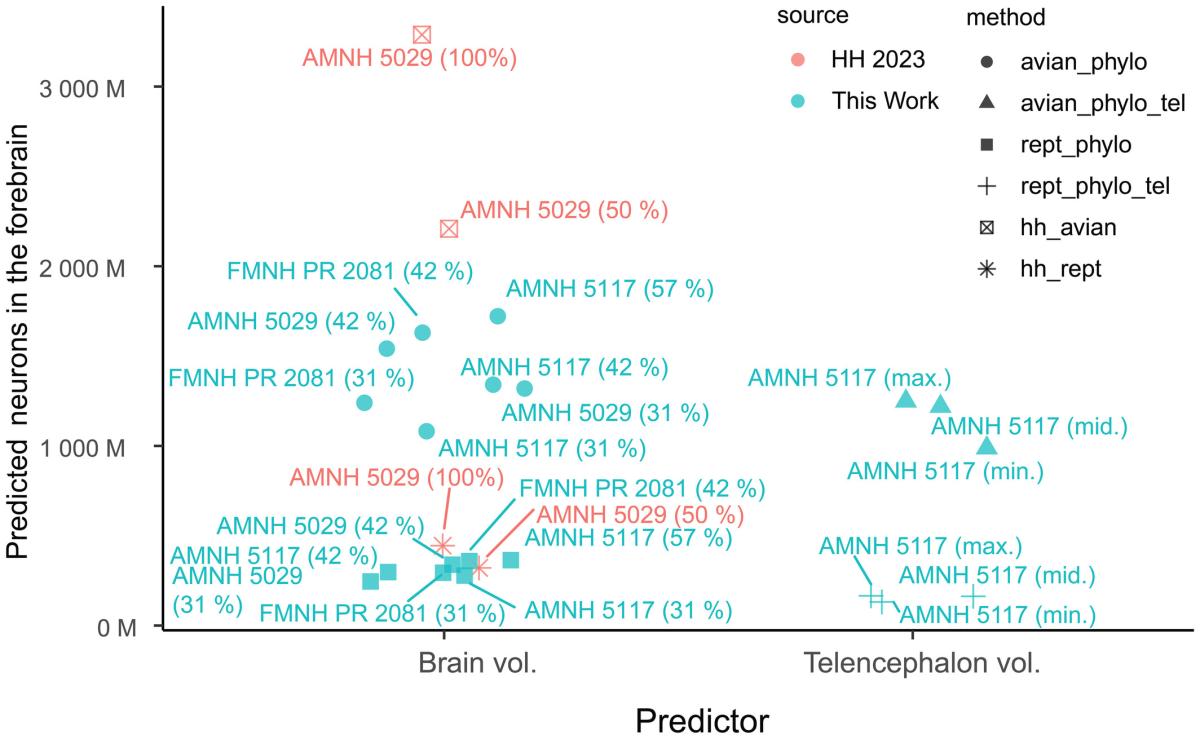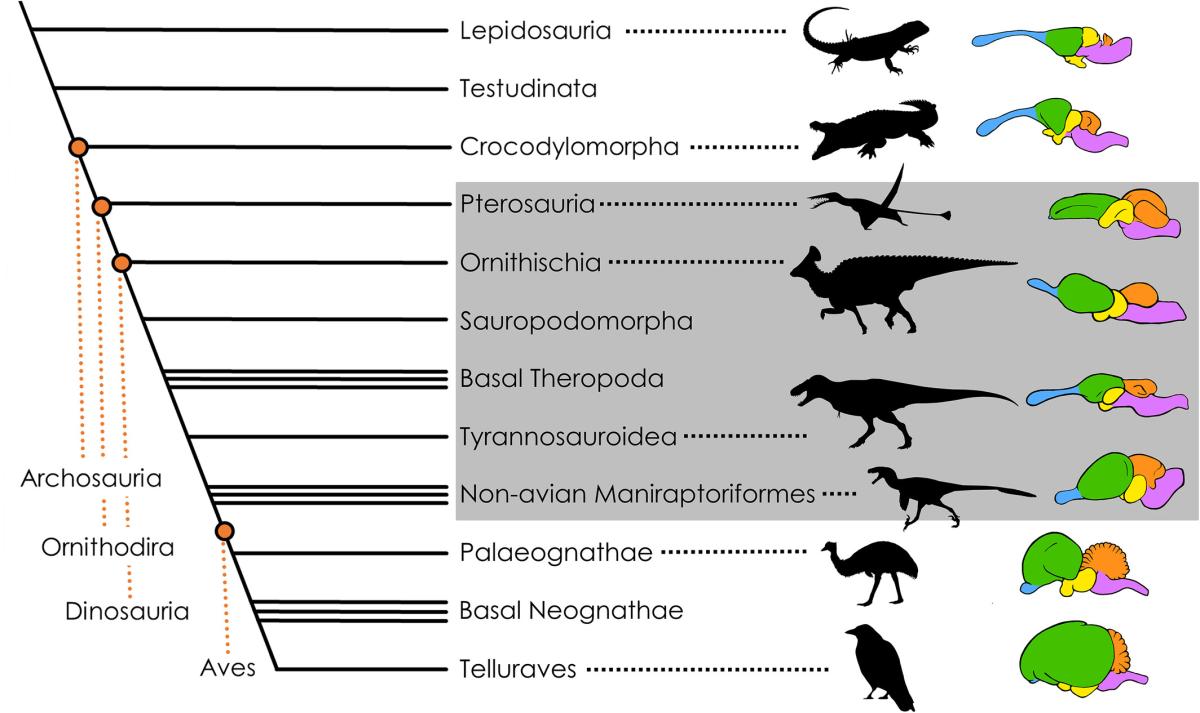ティラノサウルスはヒヒほど賢くなかった?
以前、ヒトの脳の神経細胞とグリア細胞の割合というのは、1対10くらいで、グリア細胞の方がずっと多いとされていました。昔の教科書や脳について書かれた本にはそのような記述を見かけることがあります。
2005年、テネシー州にあるヴァンダービルト大学の神経科学者であるSuzana Herculano-Houzel博士は、脳の神経細胞とグリア細胞が、実は1:1くらいではないか、という実証的な解析結果を示し、現在では定説となっています(脳の場所にもよる)。
2023年7月、このHerculano-Houzel博士が、Journal of Comparative Neurologyの論文で、ティラノサウルス(Tyrannosaurus rex)は神経細胞の数が非常に多いと主張しました。ティラノサウルスなどの獣脚類(Theropoda)の脳には非常に多くの神経細胞があり、ヒヒと同じくらい賢く、知識や道具の使用を文化的に伝達することができた可能性があると推測したのです。
Herculano-Houzel S. (2023) Theropod dinosaurs had primate-like numbers of telencephalic neurons. J Comp Neurol. 531:962-974.
これはかなり挑発的な主張で、すぐに懐疑的な見解が多くの科学者によって示されました。そして、古生物学者、神経解剖学者、認知心理学者らが、Herculano-Houzel氏の主張を否定する見解をまとめ、Anatomical Record誌に4月26日に発表しています。
Caspar, K. R. et al. (2024) How smart was T. rex? Testing claims of exceptional cognition in dinosaurs and the application of neuron count estimates in palaeontological research
https://doi.org/10.1002/ar.25459 (オープンアクセスです)
著者らは、Herculano-Houzelが恐竜の脳の大きさと脳内のニューロンの数を推定するために使用した手法を検証することで、彼女の仮定が信頼できないとしています。
系統発生学的なモデリングと頭蓋についての測定のデータをもとに、恐竜の終脳ニューロン数の修正された推定値(This Work)を提示しています。とりわけ体の大きな獣脚類では、Herculano-Houzel氏の推定(HH2023)より神経細胞数は大幅に少ないとしました。

ある研究者は、ワニの脳を解剖したとき、頭蓋骨の上部を外して、脳が小さいことを実感しています。頭蓋骨の空洞は脳の組織で埋まっているわけでなく、脳脊髄液も多くのスペースを占めているということです。
大人のオスのヒヒの体重は14~40 kgです。T. rexの体重は7トン近くになる可能性があります。神経細胞の数は単純に体のサイズに比例します。大きな体で基本的なことを行うだけで多くの神経細胞を必要とするということを示しており、道具を使用したり文化的知識を伝達したりするための神経細胞が多いということではないということです。
恐竜には、骨盤 の特徴から鳥盤類(Ornithischia)と竜盤類(Saurischia)の2つのグループがあります。それぞれ、現在の鳥類の骨盤、トカゲの骨盤の特徴との共通点から命名されています。鳥盤類はさらに、鎧のような皮骨を持つステゴサウルスなどを含む装盾類(Thyreophora) 、二足歩行の草食イグアノドンなどを含む鳥脚類(Ornithopoda) 、頭蓋骨の後部に突起を持つトリケラトプスなどを含む周飾頭類(Marginocephalia) 」に分けられます。竜盤類は、ブラキオサウルスなどの竜脚形類(Sauropodomorpha)と、ティラノサウルスなどを含む「獣脚類(Theropoda ) 」です。獣脚類は、中生代に肉食恐竜として繁栄し、K-Pg境界である6600万年前以降も鳥類として生き残っています。現在は、鳥綱を恐竜である獣脚類の系統群に分類しています。鳥には、知識や道具の使用を文化的に伝えることができるものも知られています。

著者らによれば、獣脚類T. rexの脳の状態は爬虫類(Reptilia)に近いとしています。爬虫類では、哺乳類や鳥類の脳よりも神経細胞がゆったりと詰め込まれています。そして、爬虫類は、哺乳類や鳥類と同じ種類の接続や回路を脳内に持っていません。中生代の恐竜生物学を再構築する際には、Herculano-Houzel氏のような神経学的推定に頼るのではなく、統合的な研究が必要であるとしています。
これらのことから、ティラノサウルスはおそらくヒヒではなくワニと同程度の賢さしかなかった、と著者らは主張しています。
【合成生物学ポータル】 https://synbio.hatenablog.jp
【Twitter】 https://twitter.com/yamagatm3
更新の通知を受け取りましょう



























投稿したコメント